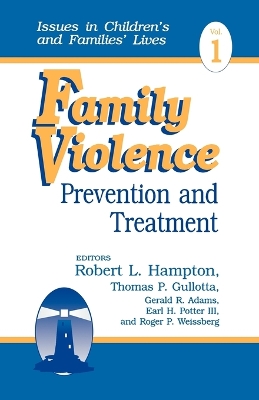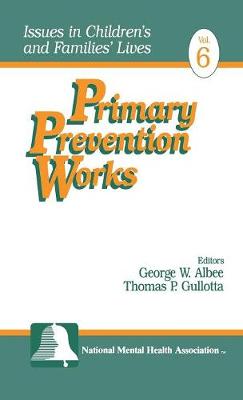Issues in Children's and Families' Lives
2 primary works
Book 1
Family Violence
by Robert L. Hampton, Thomas P. Gullotta, and Gerald R. Adams
Published 15 June 1993
What factors contribute to family violence and how can they be identified early so that future violence can be prevented? Addressing these and related issues, the papers in this volume are a testimony to the rapid expansion of research, theory and practice in the family violence field.
Leading researchers and clinicians explore the roots of family violence, including both physical and sexual abuse, and examine assessment, treatment and prevention. Topics addressed include whether children or the elderly are at greater risk, and the role of substance abuse in family violence.
Book 6
I commend this book to you and urge you not only to read about the excellent programs contained herein but also to work to bring these and other high quality prevention programs into your community. Share this information with your elected officials, business leaders, parent groups, and anyone who holds a stake in your community′s well-being. With so many pressing problems confronting children and families in America, we must act now to begin to reduce the tragedy of needlessly wasted lives. --from the Preface by Rosalynn Carter Although mental disorders cost our nation $72.7 billion each year in treatment, related support, and lost productivity, the funding for prevention of mental disorders has been inconsistent, due in some part to a lack of confidence regarding the effectiveness of specific prevention programs. This book highlights some of the most effective prevention programs in the United States and offers readers a common set of principles to reduce maladaptive behavior in ourselves, our children, and society. Divided into five parts, the book begins with an overview of prevention history in this country and next shows ways to operationalize George W. Albee′s incidence formula. Part 2 focuses on successful programs that increase parent-child interaction and parenting ability. Part 3 explores preschool programs, some of which use parents as teachers, others of which describe quality child care programming and programs that develop problem-solving abilities in early childhood. Part 4 examines school-age programs ranging from interventions in school settings to developing social competency and job readiness. And, Part 5 focuses on prevention interventions in adulthood, specifically unemployment and depression. With contributions form the leading researchers in the prevention field, this book provides readers with the best information available about effective prevention programs and the knowledge to develop these preventive services at both state and local community levels. Primary Prevention Works will be of interest to policymakers and to researchers and practitioners in developmental psychology, clinical psychology, family studies, social work, counseling, human services, nursing, and public health.

